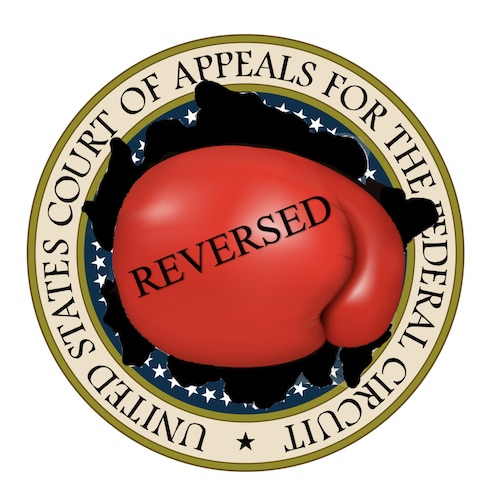USPTO Provides Insight Into Patent Eligibility in the Context of AI | Mayer Brown
As required by President Joe Biden’s Executive Order on the Safe, Secure, and Trustworthy Development and Use of Artificial Intelligence, the United States Patent and Trademark Office (“USPTO”) issued the Guidance on Patent Subject Matter Eligibility, Including on Artificial Intelligence (“Guidance”) to address whether the patent subject matter eligibility requirement embodied in 35 U.S.C. § 101 presents a barrier to patenting AI inventions. The point of a USPTO guidance is to provide insight into how the USPTO views an issue. But it must be appreciated that the USPTO cannot create new law—it is beholden to the laws drafted by Congress and interpreted by the courts. These constraints limit the USPTO’s ability to provide definitive rules as to the applicability of §101 to claims directed to AI. As a result, this Guidance breaks no new ground on patent eligibility analysis, but it provides clarity on how the USPTO would apply existing legal precedent to claims that involve AI.1
The Guidance addresses the interplay between the two-step framework that the USPTO uses to assess patent subject matter eligibility and claims directed to AI inventions. The USPTO’s framework first assesses whether the AI claim is directed to the judicial exceptions—i.e., laws of nature, natural phenomena, or abstract ideas—and, if so, then asks whether the claim recites additional elements that amount to significantly more than these exceptions. The Guidance separately addresses whether the use of AI in the patenting process is relevant to a patent subject matter eligibility analysis. The USPTO succinctly addressed the latter topic by explaining that the manner by which an invention comes into existence is irrelevant to a patent subject matter eligibility analysis.2. Use of AI will not foreclose compliance with 35 U.S.C. § 101. On the former topic, the USPTO notes that the “inquiry can be challenging for AI inventions,” but seeks to allay concerns that AI claims will confront higher barriers compared to other computer-implemented inventions.3
The USPTO provides insight into how its examiners will assess “whether the claim integrates the recited judicial exception into a practical application of the exception (in which case the claim is eligible) or whether the claim is “directed to” the exception.”4 If the claim is “directed to” a judicial exception, the examiner should determine whether the additional claim elements cause the claim as a whole to encompass something that is “significantly more” than the judicial exception. To provide insight into these topics, the Guidance analyzes the existing legal precedent as applied to AI and provides three examples with specific fact patterns, and assesses whether specific claims sought under the specific facts would meet the requirements of 35 U.S.C. §101.
The USPTO’s acknowledgement that claims to AI inventions may often be considered attempts to claim abstract ideas provides an undercurrent to its analysis in view of which the USPTO explains that examiners must draw a distinction “between a claim that ‘recites’ an abstract idea (and thus requires further eligibility analysis) and one that merely involves, or is based on an abstract idea.”5
Judicial precedent tends to categorize “abstract ideas” into three categories: (1) mathematical concepts; (2) methods to organize human activity; and (3) mental processes. The Guidance does not provide clear indication when a claim to an AI invention will be an abstract idea falling into one of the above categories. Instead, it discusses several cases and then states whether those cases would or would not support a finding that a claim to an AI invention would encompass patent eligible subject matter. The closest the Guidance comes to providing a line of demarcation comes with its discussion of mental processes. For this category, the Guidance “explains that claims do not recite a mental process when they contain limitations that cannot practically be performed in the human mind.”6(emphasis added). Considering the computational power of AI, it’s possible that one could present an argument showing that the AI sought to be claimed exceeds human capabilities.
A few other avenues exist by which one may succeed in showing that its AI-related claims overcome a patent subject matter eligibility challenge. One avenue is to show that an AI claim “reflects an improvement in the functioning of a computer.”7As the excitement associated with AI is intertwined with the expectation that it will be able to allow computers to perform tasks not achieved to date, it seems arguments that the AI improves the function of a computer will be abundant. Another avenue is to explain that the claim is directed to a “particular solution to a problem or a particular way of achieving an outcome.”8A key is to show that the claim does not seek to foreclose a broad swath of using AI because it is a “specific application to a particular technological field.”
At bottom, the Guidance achieves the overall goal of President Biden’s AI executive order by showing that the United States is receptive to finding ways to allow those that invest in AI to protect their investments through patent protection, by providing clarity that 35 U.S.C. § 101 will not present barriers to AI greater than other technologies. The Guidance, however, remains ambiguous as to how specific AI claims will fare. At best, examiners and practitioners can compare proposed claims to the three examples provided by this Guidance and the cases recited in the Guidance, but the breadth that the United States will provide to AI claims remains in the hands of the US judiciary, unless Congress acts to revise the requirements of 35 U.S.C. §101 as they pertain to AI.
1 USPTO issues AI subject matter eligibility guidance, 89 Fed. Reg. 58128 (July 17 2024)
2 89 Fed. Reg. 58138 (July 17, 2024)
3 89 Fed. Reg. 58134 (July 17, 2024)
4 89 Fed. Reg. 58133 (July 17, 2024)
5 89 Fed. Reg. 58134 (July 17, 2024)
6 89 Fed. Reg. 58136 (July 17, 2024)
7 89 Fed. Reg. 58137 (July 17, 2024)
8 89 Fed. Reg. 58137 (July 17, 2024)
[View source.]






